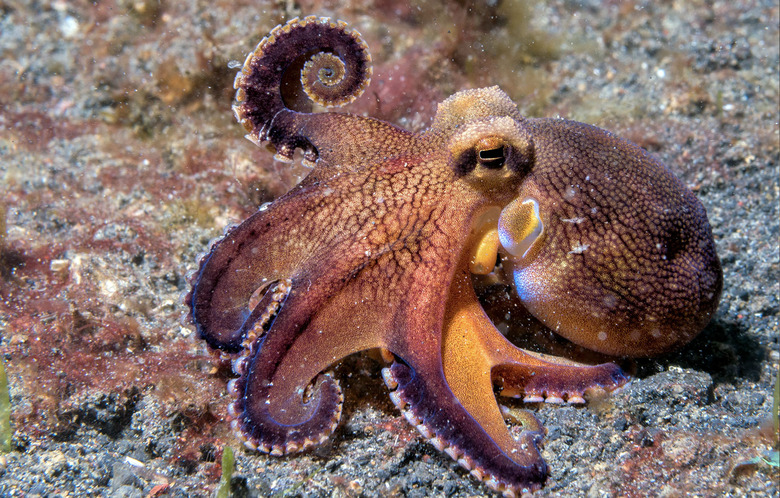You Need To See This Stunning Video Of A Rare Blanket Octopus
A marine biologist managed to capture a blanket octopus on video earlier this year. Jacinta Shackleton was snorkeling near Lady Elliot Island off the coast of Australia when she spotted it. At first, Shackleton says she thought that it was just a juvenile fish sporting long fins. After getting closer, though, she realized it was a blanket octopus.
A marine biologist caught a blanket octopus on video
Following the discovery, Shackleton told The Guardian that she was filled with an "overwhelming sense of joy and excitement." Spotting one of these creatures in the wild is extremely rare. As such, Shackleton says this was a once-in-a-lifetime opportunity to see it up close. Shackleton later posted a video of the encounter on her Instagram.
This isn't the first time we've seen a blanket octopus on video, though. Previously, divers have spotted them, but the encounters are still considered very rare. These creatures make their homes around coral reefs in tropical and subtropical oceans. Shackleton says that the species has only been spotted around Lady Elliot Island three times before. The creatures are also extremely intelligent, which is probably part of why some people think octopuses could be aliens.
You can check out the video for yourself on Shackleton's Instagram for a closer look.
The largest size discrepancy in the animal kingdom
One of the things that makes this particular creature so enthralling is just how different the males and females are. According to The Great Barrier Reef Foundation, a male blanket octopus weighs 40,000 times less than a female. It's the largest size discrepancy that we currently know of in any animal on the planet.
These creatures are so hard to spot because they live a very nomadic life. While they make their homes in coral reefs, they move around every few days. Their bodies are also extremely adaptable, making it easy to roam through different water temperatures with ease. Blanket octopuses only live for three to five years. During that time, they float through the ocean. When threatened, the blanket octopus swoops into deeper water.
Another interesting fact about these creatures is that the male doesn't have the famed blanket that the species is named for. Instead, only the females carry the blanket around with them. That cape can come in handy, too. The female blanket octopus can fold the blanket under its arms to get away faster. It can also detach the blanket as needed to distract or try to slow predators down.
Additionally, The Great Barrier Reef Foundation says that mating for this species is extremely dangerous. The male blanket octopus expends all of its body's resources while mating. Afterward, its third arm breaks off and the male blanket octopus dies. The female will then carry around over 100,000 eggs until they hatch. After her babies have hatched, though, she'll most likely die, too.
Seeing the beautiful and rare blanket octopus on video is a delightful treat. And it's not one that Shackleton is likely to forget anytime soon.

